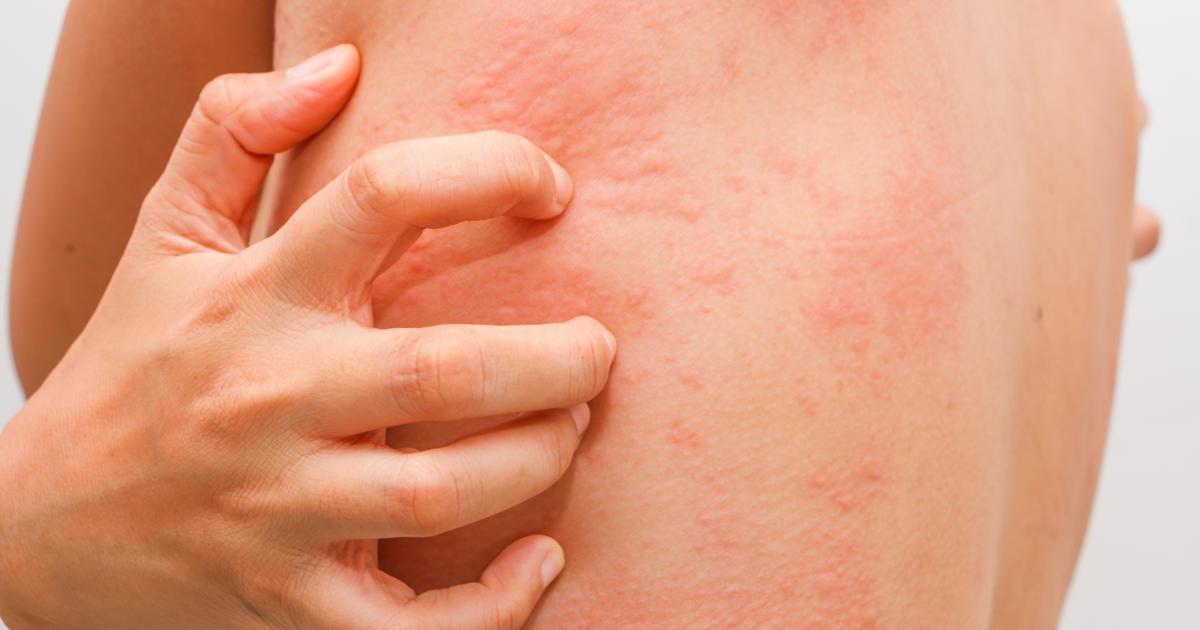Key Indicators Of Phenylketonuria
Phenylketonuria (PKU) is a disorder where an amino acid called phenylalanine accumulates inappropriately in the body. Phenylalanine is a protein building block the body obtains through the consumption of food. Phenylketonuria occurs when there is a mutation of the PAH gene, which produces the enzyme responsible for the breakdown of phenylalanine called phenylalanine hydroxylase. Without enough phenylalanine hydroxylase, the body cannot process phenylalanine from the diet effectively. Nerve cells within the brain are exceptionally sensitive to levels of phenylalanine, which explains why a buildup of this substance in the blood and other tissues can result in damage to the brain. A newborn baby affected by phenylketonuria will not exhibit any symptoms at first. However, untreated babies will develop symptoms within the first several months of life.
Examine the symptoms of phenylketonuria now.
Musty Odor In Breath And Urine

Individuals affected by phenylketonuria commonly experience a musty odor in their breath and their urine as a result of the excess phenylalanine in their body. The excess phenylalanine occurs in the body because the patient is deficient in phenylalanine hydroxylase. Since there is no phenylalanine hydroxylase to break down phenylalanine correctly, it is abnormally metabolized into two byproducts in the patient's body. The musty odor that comes out in the sweat and the urine of individuals with phenylketonuria is a result of the presence of phenylacetate. Phenylacetate is a fatty acid metabolite or byproduct produced as a result of the irregular metabolization of phenylalanine. The body has no practical use for this metabolite and eliminates it from the body through the avenues of urine and sweat. When phenylacetate accumulates to an excessive level in the bodily fluids, it can make a presence in the patient's saliva. It is the phenylacetate in the saliva that causes an individual with phenylketonuria to have a musty odor in their breath.
Learn more about the warning signs of phenylketonuria now.
Microcephaly

Microcephaly is a condition where a child's head is smaller in circumference than usual because the brain has stopped growing, or it has developed improperly. This condition may develop in the first couple of years of life, or it may be present when the child is born. Microcephaly can be indicative of the baby being affected by phenylketonuria. In addition, a woman affected by phenylketonuria can develop a condition called maternal phenylketonuria if she leaves her condition untreated. In individuals with maternal phenylketonuria, the blood phenylalanine levels become dangerously high. These excessive phenylalanine levels in the body can cause the developing fetus to acquire any one of numerous different complications. Even though the baby does not inherit phenylketonuria from the mother, they can develop microcephaly as a result of it. There is no way to cure microcephaly, and treatment for the condition focuses on reducing the impact of the neurological disabilities and deformities that result from it. If a child is born with microcephaly, it can indicate the mother has phenylketonuria.
Get more details on symptoms of phenylketonuria now.
Delayed Development

A child who has phenylketonuria may experience delayed development as a direct result of the condition, or they may experience it due to the mother developing maternal phenylketonuria during her pregnancy. When a child has phenylketonuria at birth, their phenylalanine levels are normal. However, the levels of phenylalanine in the child's body will begin to rise within the first several hours after being born. If the child goes without treatment, cognitive delays will be apparent by the time the child reaches six months old. These delays precipitate from the toxicity of brain tissue caused by excessive levels of phenylalanine in the child's body. When the brain tissue becomes toxic, cellular damage will occur. The brain contains neurotransmitters or signaling molecules the cells utilize to communicate with each other. When certain neurotransmitters are not produced in the correct quantities, the brain is unable to function the way it should. High levels of phenylalanine cause impairment to the production of neurotransmitters vital for the child's learning, motivation, mood, and memory. Disruption in the normal process of any one of those aspects can result in delayed development in the affected child.
Uncover more warning signs of phenylketonuria now.
Neurological Issues

Neurological issues commonly manifest in phenylketonuria patients. The high levels of phenylalanine found in these individuals can easily cause abnormalities to occur in the myelin sheath around the nerves. The myelin sheath is responsible for the uninterrupted transmission of signals between nerves throughout the central nervous system. When this sheath has abnormalities, the proper transmission of signals between the nerves is disrupted. This disruption may result in the patient experiencing random muscle spasms, frequent seizures, and other disturbances in general motor function. Even individuals with phenylketonuria who are treated promptly can develop brisk tendon reflexes or tremor from the abnormalities that occur in the white matter. White matter is the tissues of the brain that produce the myelin sheath for the nerves. An individual with phenylketonuria may have a lower IQ than others their age, develop learning disabilities, and have frequent memory loss. Anxiety, depression, panic attacks, and other emotional problems are also fairly common neurological issues that manifest in phenylketonuria patients.
Discover another phenylketonuria warning sign now.
Skin Rashes

Eczema or atopic dermatitis is one of a few skin rashes that can manifest in phenylketonuria patients. Atopic dermatitis is characterized by dry skin, severe itchiness, red patches of skin on the hands, ankles, neck, eyelids, knees, face, feet, wrists, upper chest, elbows, and the scalp. Sometimes small bumps may develop that are raised, may leak fluid, and usually crust over when scratched. The affected area of the patient's skin may become cracked, thickened, or scaly. The exact mechanism of how phenylketonuria causes atopic dermatitis to occur is not entirely clear, but increased vulnerability to environmental factors is known to play a role in the process. Because excessive levels of phenylalanine are known to disrupt normal metabolization of melanin in the skin, the same mechanism may be responsible for causing increased sensitivity and decreased levels of protection against the environmental factors around the skin. These changes can result in the inflammation in the skin of phenylketonuria patients from contact with external agents such as bacteria, allergens, and other irritants.